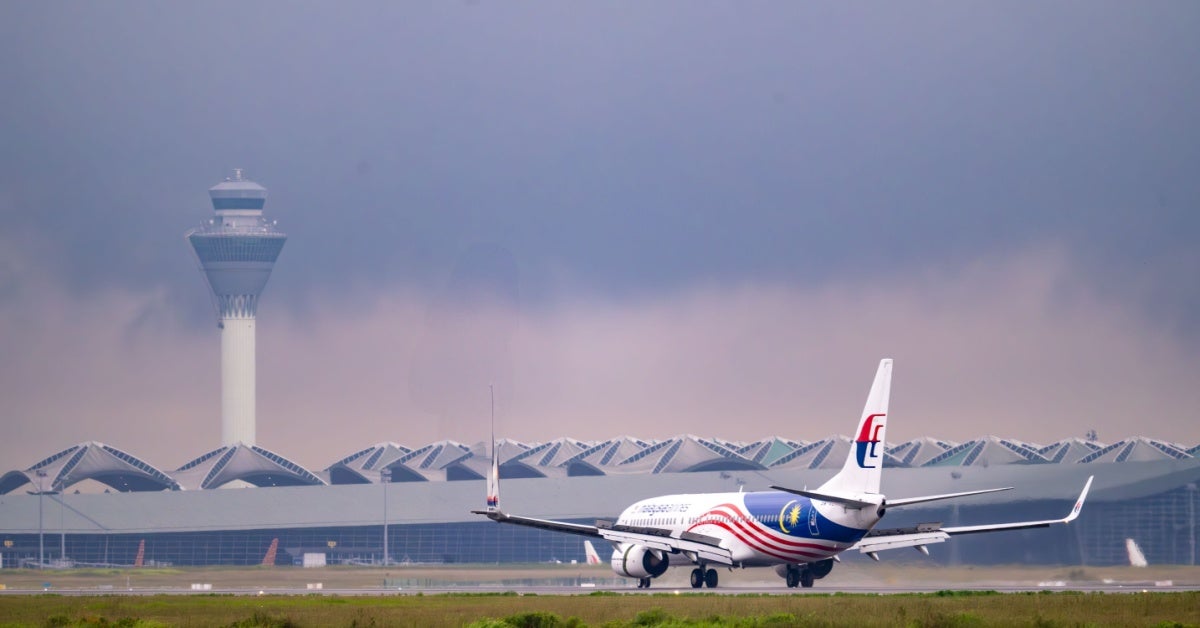Cybersecurity attacks on the aviation industry are on the rise, underscoring the vulnerabilities of critical infrastructures worldwide. Recently, Kuala Lumpur Airport—commonly referred to as KLIA—experienced a significant cyber incident that sparked both local and international concern. As one of Southeast Asia’s busiest airports, KLIA plays a vital role in connecting travelers to and from Malaysia. This breach serves as a stark reminder that even highly sophisticated transportation hubs are not immune to cyber threats.

Source: Shutterstock
Kuala Lumpur Airport: Background and Importance
Kuala Lumpur International Airport (KLIA) is a cornerstone of Malaysia’s tourism and economic ecosystem. Established in 1998, KLIA has rapidly become a top hub for international travellers, connecting diverse global destinations. Serving millions of passengers each year, KLIA provides cutting-edge facilities, including automated baggage systems and self-service kiosks, designed to streamline the travel experience.
The Cyber Incident at KLIA
In a disruption that sent shockwaves through both local and global aviation stakeholders, Kuala Lumpur Airport faced a cyberattack that reportedly attempted to breach multiple operational systems. Sources like Dark Reading and GBHackers indicate that cybercriminals sought to compromise mission-critical servers. While specific details remain undisclosed, initial investigations suggest passenger data and flight operations may have been at risk.
The attackers targeted Malaysia Airports Holdings Berhad (MAHB), which operates most of the country's airports. A $10 million ransom demand was allegedly issued; however, Malaysian authorities—according to The Record—refused to comply. Malaysia Airports Holdings Berhad, which operates KLIA, assured the public it had rapidly deployed mitigation strategies to ensure essential services remained operational.
Implications for Airlines, Passengers, and Operations
Operational continuity is paramount at any major Malaysian Airport. Flight schedules, passenger check-in, and baggage handling all rely on robust digital networks. Though disruptions at KLIA were reportedly contained, minor delays and slowdowns in check-in processes were observed by some travelers. Such incidents not only inconvenience passengers but can lead to significant financial burdens for airlines and airport operators.
KLIA’s swift response, in collaboration with cybersecurity experts, helped isolate affected systems. In the short term, the airport managed to maintain most services, reinforcing public confidence. Yet, reputational harm remains a concern if repeated incidents occur. From an industry perspective, the financial and legal ramifications of compromised passenger data underscore the importance of investing in advanced cyber defenses.
Why Attack Kuala Lumpur Airport?
Cybercriminals target large transportation hubs due to the vast amounts of data and the high-impact disruptions possible. As Malaysia’s busiest airport, KLIA processes millions of passenger records and payment transactions, making it an attractive target for ransomware operators and other malicious actors. Moreover, in the event of an extensive outage, the pressure to resume normal services quickly can put airport authorities in a difficult negotiating position.
Globally, targeting critical infrastructure like airports, power grids, or healthcare systems has become a strategic approach for cyber adversaries. This pattern underscores the urgent need for enhanced cybersecurity measures across industries, particularly for airports that serve as vital national lifelines.
Government and Private Sector Response
The Malaysian government has maintained a strong stance on cyber resilience. Following the KLIA incident, Prime Minister Anwar Ibrahim confirmed that Malaysia rejected the ransom demand made by the attackers, emphasizing the country’s refusal to negotiate with cybercriminals and affirming Malaysia’s commitment to a policy of zero tolerance for cyber extortion.
The Ministry of Communications and Digital also highlighted the importance of bolstering cybersecurity across critical sectors. Communications Minister Fahmi Fadzil announced the deployment of the National Cyber Coordination and Command Centre (NC4) to manage cyber threats and coordinate mitigation efforts across government agencies.
On the private sector side, Malaysia Airports Holdings Berhad (MAHB) stated that it worked closely with cybersecurity specialists and government agencies to identify and resolve the breach. According to Free Malaysia Today, the Transport Minister confirmed that while a cyberattack did occur, no key services were disrupted thanks to rapid response strategies in place.
Cybersecurity Malaysia, the national cyber agency, has also been involved in the forensic investigation and technical support. In collaboration with international vendors and law enforcement, the agency is now implementing stricter controls and suggesting advanced cyber hygiene practices across Malaysia’s transportation infrastructure.
Long-Term Cybersecurity Strategies for Airports
Industry experts advocate a multi-tier defense approach. Zero-trust architecture requires continuous authentication of users and devices, minimizing unauthorized access risks. Regular penetration testing and risk assessments help identify software or hardware vulnerabilities before malicious actors exploit them.
Partnership with international aviation bodies, such as the International Civil Aviation Organization (ICAO), remains essential. By sharing intelligence on emerging threats, airports worldwide can collectively improve their cyber readiness. Ensuring compliance with international standards, including ISO 27001 and the guidelines of the International Air Transport Association (IATA), further fortifies an airport’s cybersecurity posture.
Passenger Guidance and Safety Tips
For travelers concerned about potential disruptions, KLIA offers various options to stay informed and prepared:
- Official Airport Website: Visit the Malaysia Airports website for real-time updates on any operational changes.
- Mobile Apps: Download airline apps to receive alerts on flight timings and check-in processes.
- Backup Travel Plans: Arrive earlier than usual, especially after a major cyber incident, to accommodate unexpected delays.
- Customer Service Points: In case of system slowdowns, onsite airport staff can manually assist with check-in and baggage questions.
Despite heightened media coverage of cyber risks, KLIA remains dedicated to delivering a safe and secure travel environment. Regular security drills and improved digital protocols aim to minimize future disruptions.
Conclusion
The cyberattack at Kuala Lumpur Airport is a clear demonstration of the complex challenges modern airports face in an increasingly digital age. KLIA’s prompt actions and the government’s firm stance against ransom payments highlight the importance of a united front in combating cyber threats. Moving forward, KLIA is implementing more comprehensive security measures to reassure travelers, airlines, and international partners.
As the airport continues to innovate and expand, the lessons learned from this incident will guide stronger cybersecurity frameworks. Continuous upgrades, global cooperation, and passenger awareness initiatives are critical for ensuring KLIA’s reputation as a world-class aviation hub remains intact.
Frequently Asked Questions
Kuala Lumpur Airport (KLIA) is Malaysia’s main international airport, serving millions of passengers annually. It includes a main terminal and a secondary terminal, klia2, which largely handles low-cost carriers.
The cyberattack caused minor delays and system slowdowns, but KLIA authorities acted quickly to contain the breach. Critical services remained functional, minimizing disruptions to passengers and airlines.
According to official statements and media sources, the Malaysian government refused to pay the ransom, adhering to a strict no-negotiation policy with cybercriminals.
Passengers can monitor updates on the Malaysia Airports website, follow airline mobile apps for real-time flight notifications, and check official social media channels.
KLIA is enhancing its cyber defenses by adopting zero-trust architecture, conducting regular risk assessments, training staff to identify threats, and collaborating with global aviation bodies for real-time threat intelligence.





